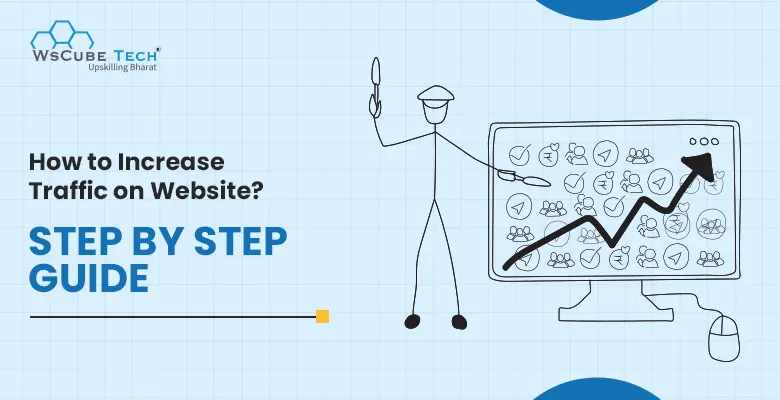Increasing website traffic is key to online success. In 2025, mastering this skill will be crucial.
Website traffic drives business growth. Higher traffic means more leads, sales, and brand awareness. As we move closer to 2025, the competition will only get tougher. Businesses need to adopt new strategies to stay ahead. Duda, a professional website-building platform, offers solutions for agencies, SaaS companies, and hosting providers.
With features like AI-assisted design tools, SEO optimization, and eCommerce capabilities, Duda helps businesses create efficient and scalable websites. The goal is to attract more visitors and convert them into loyal customers. Understanding and implementing these strategies now will prepare businesses for the future. Let’s explore the best ways to increase website traffic in 2025.
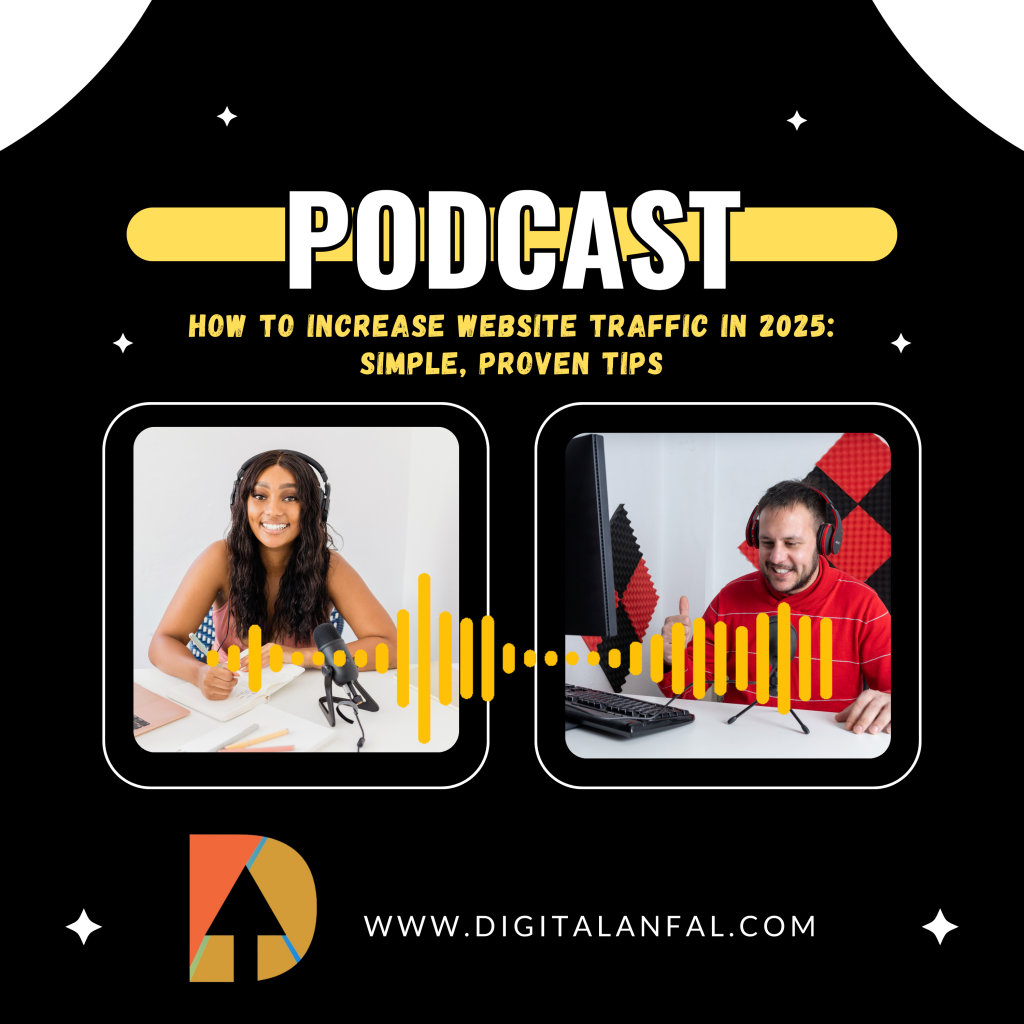
Introduction To Increasing Website Traffic In 2025
Increasing website traffic remains a key goal for businesses in 2025. With the digital landscape evolving, understanding modern strategies is essential. This section will guide you through why traffic matters and the latest methods to boost it.
Why Website Traffic Is Crucial For Your Success
Website traffic is vital for any online business. Here’s why:
- More visitors mean more potential customers.
- High traffic improves brand visibility and recognition.
- Increased traffic can lead to higher sales and revenue.
- More traffic provides valuable data and insights for business decisions.
In simple terms, without traffic, your website can’t fulfill its purpose. It’s the foundation for online success.
Overview Of Modern Strategies
Here are some effective strategies to increase website traffic in 2025:
- Search Engine Optimization (SEO): Optimize your website to rank higher on search engines.
- Content Marketing: Create valuable content to attract and engage visitors.
- Social Media Marketing: Use social media platforms to drive traffic to your site.
- Pay-Per-Click (PPC) Advertising: Invest in paid ads to attract targeted traffic.
- Email Marketing: Use email campaigns to bring visitors back to your site.
These strategies are fundamental in today’s digital world. They offer a mix of organic and paid methods to boost traffic.
Let’s dive deeper into each strategy. Understand how they work and how you can apply them to your business.
Seo Optimization
SEO remains a cornerstone for increasing traffic. Focus on:
- Keyword Research: Find the right keywords for your content.
- On-Page SEO: Optimize titles, meta descriptions, and headings.
- Technical SEO: Improve site speed and mobile-friendliness.
- Link Building: Acquire backlinks from reputable sites.
Content Marketing
Content is king. Create:
- Blog Posts: Share informative and engaging articles.
- Videos: Produce engaging and informative video content.
- Infographics: Visual content that is easy to share and understand.
Leverage social media platforms:
- Engage: Interact with your audience regularly.
- Share: Post content that links back to your website.
- Advertise: Use paid ads to reach a broader audience.
Ppc Advertising
Pay-Per-Click advertising can drive targeted traffic. Focus on:
- Google Ads: Create campaigns to appear in search results.
- Social Media Ads: Use platforms like Facebook and Instagram.
Email Marketing
Email remains a powerful tool. Tips include:
- Build a List: Grow your email subscriber base.
- Create Newsletters: Send regular updates and promotions.
- Personalize: Tailor emails to individual preferences.
These strategies, when used effectively, can significantly increase your website traffic in 2025.

Credit: trushitkasodiya.medium.com
Seo Optimization Techniques
SEO optimization is crucial for increasing website traffic in 2025. Implementing effective techniques can help your website rank higher on search engines, attract more visitors, and improve overall user experience. Below are some key strategies to enhance your website’s SEO performance.
On-page Seo Best Practices
On-page SEO focuses on optimizing individual web pages to rank higher and earn more relevant traffic. Here are some best practices:
- Keyword Research: Identify relevant keywords for your content.
- Title Tags: Use keywords in your title tags.
- Meta Descriptions: Write compelling meta descriptions with keywords.
- Header Tags: Use H1, H2, H3 tags to structure your content.
- Content Quality: Create high-quality, informative content.
- Internal Linking: Link to other pages on your site.
- Image Optimization: Use alt text with keywords for images.
Off-page Seo: Building Quality Backlinks
Off-page SEO involves activities outside your website to improve search engine rankings. Building quality backlinks is essential:
- Guest Posting: Write articles for other websites.
- Social Media Sharing: Share your content on social media platforms.
- Influencer Outreach: Collaborate with influencers to gain backlinks.
- Forum Participation: Engage in forums and include links to your site.
- Directory Submissions: Submit your site to relevant directories.
Technical Seo: Enhancing Site Performance
Technical SEO ensures search engines can crawl and index your website efficiently. Key aspects include:
- Site Speed: Improve your website’s loading speed.
- Mobile-Friendliness: Ensure your site is mobile-responsive.
- Secure Sockets Layer (SSL): Use HTTPS for secure connections.
- XML Sitemap: Create and submit an XML sitemap.
- Robots.txt: Optimize your robots.txt file.
- Structured Data: Implement schema markup for better indexing.
Content Marketing Strategies
In 2025, content marketing remains crucial for increasing website traffic. Implementing effective strategies will help your website attract and retain visitors. Here are some key content marketing strategies to consider:
Creating High-quality, Engaging Content
High-quality content is the foundation of any successful content marketing strategy. Here are some tips:
- Understand your audience’s needs and interests.
- Use clear and concise language.
- Incorporate keywords naturally to improve SEO.
- Provide valuable and informative content.
- Update content regularly to maintain relevance.
Consider using a mix of content types, such as blog posts, articles, and infographics. This variety can keep your audience engaged and coming back for more.
Leveraging Video And Visual Content
Video and visual content are powerful tools for engaging audiences. They can convey complex information quickly and effectively. Here are some ways to use them:
- Create short, informative videos that address common questions or problems.
- Use images and graphics to break up text and make content more digestible.
- Embed videos in blog posts to enhance the reader’s experience.
- Share visual content on social media to increase reach.
Tools like Duda can help you design and implement visual content seamlessly on your website.
Utilizing User-generated Content
User-generated content (UGC) can significantly boost your website’s credibility and engagement. Here are some ways to incorporate UGC:
| Method | Description |
|---|---|
| Reviews and Testimonials | Encourage users to share their experiences and feedback. |
| Social Media Mentions | Highlight user posts that mention your brand. |
| Guest Posts | Invite users to write blog posts on your site. |
| Forums and Discussions | Create a community space for users to share ideas. |
By leveraging UGC, you can build a community around your brand and create a more engaging experience for visitors.
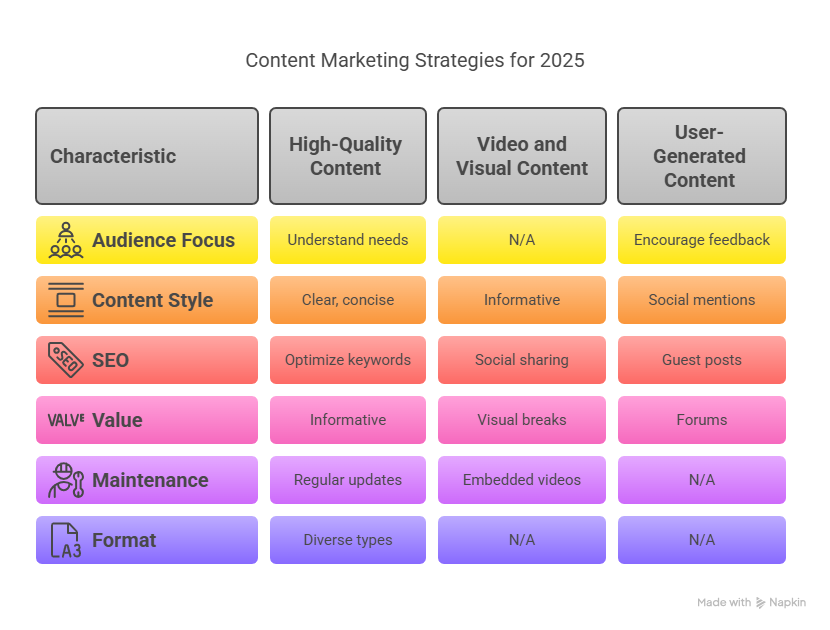
Social Media Marketing
Social media marketing is a powerful way to increase website traffic in 2025. By leveraging popular platforms, you can reach a wider audience and engage with potential customers. This section will guide you through choosing the right social media platforms, creating shareable content, and engaging with your audience.
Choosing The Right Social Media Platforms
Choosing the right social media platforms is crucial for effective marketing. Each platform has unique features and user demographics. Focus on platforms where your target audience spends most of their time. Here is a quick guide:
| Platform | Key Features | Audience |
|---|---|---|
| Wide reach, diverse demographics, groups, and events | Adults 25-55 | |
| Visual content, stories, reels | Younger adults 18-34 | |
| Professional networking, B2B marketing | Professionals 30-50 | |
| Real-time updates, trending topics | Adults 18-49 |
Creating Shareable Content
Creating shareable content is key to gaining traction on social media. Focus on content that resonates with your audience. Here are some tips:
- Use eye-catching images and videos.
- Write concise and engaging captions.
- Include clear calls to action.
- Share informative and valuable content.
For example, if you are promoting Duda, highlight its unique features like AI-assisted design tools and SEO optimization.
Engaging With Your Audience
Engaging with your audience builds trust and loyalty. Respond to comments and messages promptly. Here are some strategies:
- Ask questions to encourage interaction.
- Run polls and surveys.
- Host live sessions and Q&A.
- Share user-generated content.
By actively engaging, you show that you value your audience, which can lead to increased traffic and conversions.
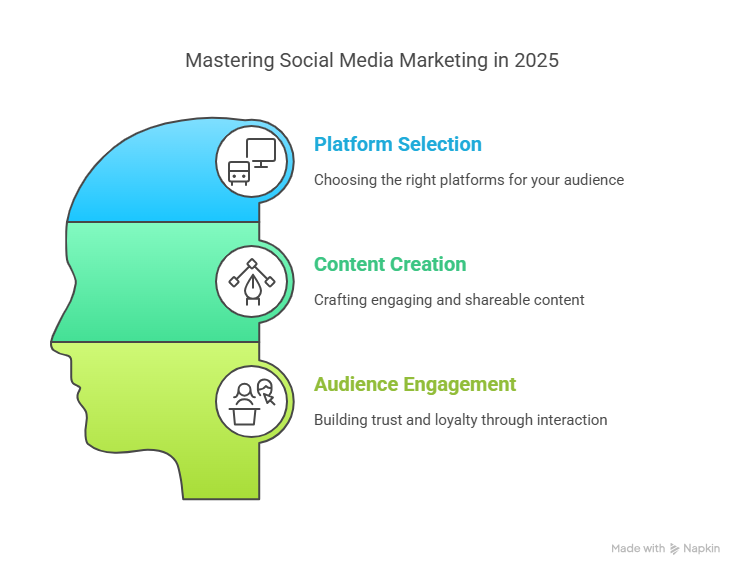
Paid Advertising Campaigns
Boosting website traffic in 2025 requires a strategic approach. Paid Advertising Campaigns are a key method to drive immediate and targeted traffic to your site. Investing in paid ads can yield significant returns when done correctly. Below, we explore three effective types of paid advertising campaigns.
Google Ads: Maximizing Roi
Google Ads is a powerful tool to maximize your return on investment (ROI). It allows you to create highly targeted ads that appear on Google search results and their partner sites. Here’s how you can maximize your ROI with Google Ads:
- Keyword Research: Choose keywords relevant to your niche. Use tools like Google Keyword Planner.
- Ad Copy: Write clear, compelling ad copy. Highlight unique selling points.
- Bid Management: Set your bids strategically. Adjust based on performance.
- Conversion Tracking: Monitor conversions. Optimize based on data.
Social Media Ads: Targeting And Retargeting
Social Media Ads offer precise targeting options. Platforms like Facebook, Instagram, and LinkedIn allow you to reach specific demographics. Here’s how to effectively use social media ads:
- Audience Segmentation: Define your audience. Use demographic and interest-based targeting.
- Ad Formats: Utilize various ad formats. Experiment with images, videos, and carousel ads.
- Retargeting: Re-engage visitors who interacted with your site. Use retargeting pixels.
- Ad Scheduling: Run your ads at optimal times. Analyze performance to find the best schedule.
Native Advertising: Integrating Ads Seamlessly
Native Advertising integrates ads into the content. These ads match the look and feel of the platform they appear on. This approach often results in higher engagement rates. Here’s how to seamlessly integrate native ads:
- Platform Selection: Choose platforms relevant to your audience. Examples include news sites and blogs.
- Content Alignment: Ensure your ads align with the content. Maintain a natural and relevant appearance.
- Quality Content: Create high-quality content. Make the ad valuable to the reader.
- Performance Tracking: Track the performance of your ads. Optimize based on engagement metrics.
Incorporating these paid advertising strategies can significantly boost your website traffic. Start by selecting the right platforms and continuously optimize your campaigns to achieve the best results.
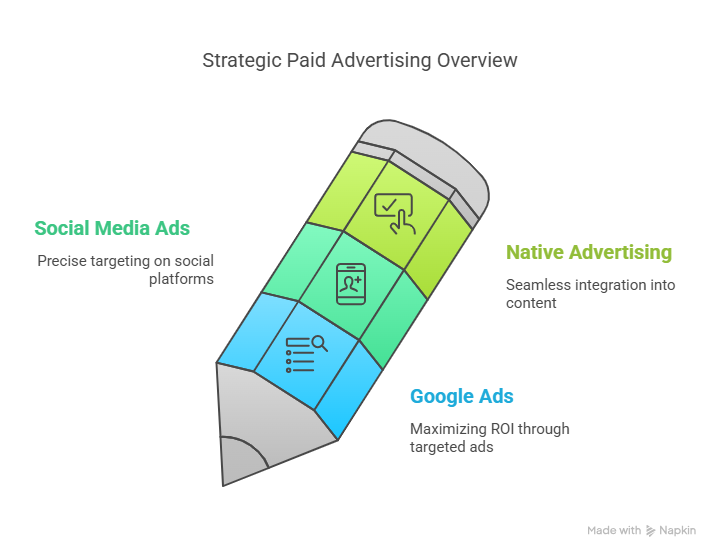
Email Marketing For Traffic Growth
Email marketing remains a powerful tool for driving website traffic in 2025. By building a strong email list, crafting compelling email campaigns, and using analytics to improve performance, businesses can see significant growth in their web traffic. Below, we will explore each of these strategies in detail.
Building A Strong Email List
A strong email list is the foundation of successful email marketing. Here are some effective strategies:
- Create engaging sign-up forms: Use clear, concise language and strong calls-to-action.
- Offer incentives: Provide exclusive content or discounts to encourage sign-ups.
- Leverage social media: Promote your email sign-up forms on your social media channels.
- Segment your audience: Tailor your messages to different groups for better engagement.
Crafting Compelling Email Campaigns
Once you have a strong email list, the next step is to create compelling email campaigns. Here are some tips:
- Personalize your emails: Use your subscriber’s name and tailor content based on their preferences.
- Write engaging subject lines: Capture attention with clear and enticing subject lines.
- Include clear calls-to-action: Direct your readers to take specific actions, like visiting your website.
- Use high-quality visuals: Incorporate images and videos to make your emails visually appealing.
- Optimize for mobile: Ensure your emails look great on all devices.
Using Analytics To Improve Performance
Analyzing your email marketing performance is crucial for continuous improvement. Here’s how to use analytics effectively:
| Metric | Importance | Action |
|---|---|---|
| Open Rate | Measures the percentage of opened emails. | Improve subject lines and sender names. |
| Click-Through Rate (CTR) | Tracks the number of clicks on links within the email. | Enhance calls-to-action and link placement. |
| Conversion Rate | Percentage of subscribers completing a desired action. | Refine your offers and landing pages. |
| Unsubscribe Rate | Indicates the number of people opting out. | Ensure content is relevant and valuable. |
By focusing on these key areas, businesses can drive more traffic to their websites through effective email marketing. Utilizing tools like Duda, which offers AI-assisted design and SEO optimization, can further enhance these efforts.
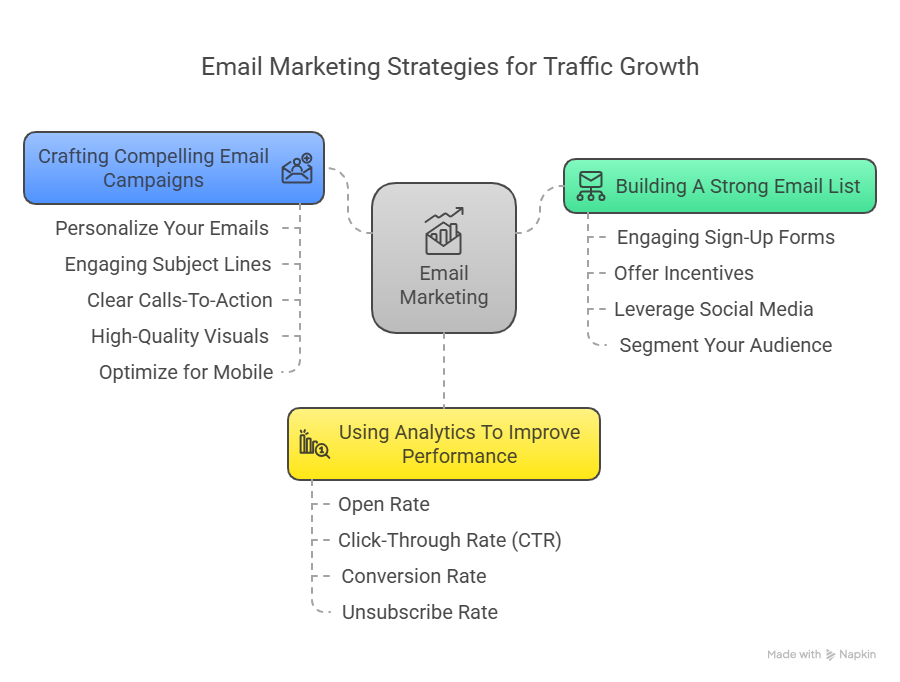
Leveraging Analytics And Data
Understanding and using analytics can significantly boost website traffic in 2025. Using data effectively helps refine strategies and improve user experience. Let’s explore how to leverage analytics and data to increase your website traffic.
Tracking Key Metrics
Tracking key metrics is essential for understanding your website’s performance. Focus on metrics like bounce rate, session duration, and page views. These metrics provide insights into user behavior and content effectiveness.
- Bounce rate: The percentage of visitors who leave after viewing one page.
- Session duration: The average time users spend on your site.
- Page views: The total number of pages viewed by users.
Regularly monitoring these metrics helps identify areas for improvement.
Using Data To Refine Strategies
Use data to refine your content and marketing strategies. Analyze which pages perform best and why. Identify the types of content that engage users most. Adjust your strategy to focus on high-performing content and improve underperforming areas.
Consider creating a table to track and compare metrics:
| Metric | High-Performing Pages | Low-Performing Pages |
|---|---|---|
| Average Session Duration | 5 mins | 1 min |
| Bounce Rate | 30% | 70% |
| Page Views | 5000 | 500 |
Tailor your content and marketing efforts based on these insights.
A/b Testing For Optimal Results
A/B testing helps determine what works best for your audience. Test different versions of a web page to see which performs better. Focus on elements like headlines, images, and call-to-action buttons.
- Create two versions of a web page (A and B).
- Divide your traffic equally between both versions.
- Analyze which version performs better.
For example, test two different headlines to see which one attracts more clicks. Use the data to make informed decisions and optimize your website for better results.
By leveraging analytics and data, you can enhance your website’s performance and attract more visitors in 2025. Monitor key metrics, refine strategies based on data, and use A/B testing to achieve optimal results.
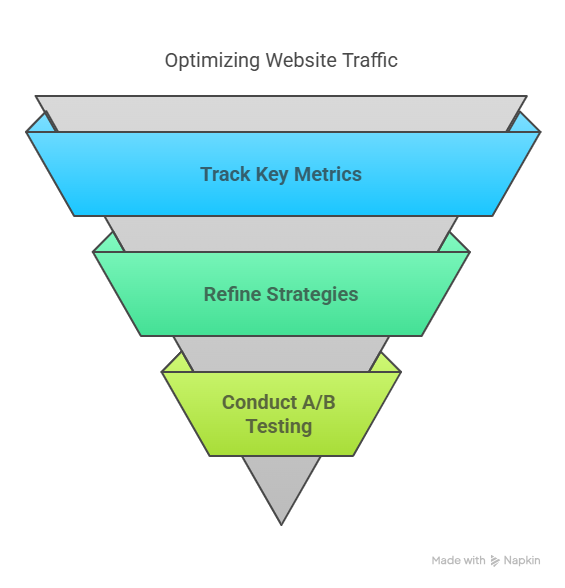
Collaborations And Partnerships
Collaborations and partnerships can significantly increase website traffic by tapping into new audiences and leveraging the influence of others in your niche. By building strong relationships with influencers, bloggers, and other businesses, you can create a network that drives consistent and quality traffic to your website. Let’s explore some effective collaboration strategies.
Influencer Marketing
Influencer marketing involves partnering with individuals who have a significant following in your industry. These influencers can help promote your brand to a wider audience. Here are key steps:
- Identify relevant influencers in your niche.
- Reach out with a personalized pitch.
- Offer incentives like free products or commissions.
- Track the results of each campaign.
Duda can benefit from this by collaborating with influencers who specialize in web hosting and website-building platforms. This can help attract more agencies and SaaS companies to their platform.
Guest Blogging And Cross-promotions
Guest blogging involves writing articles for other websites in your industry, while cross-promotions are mutual promotions between businesses. These strategies can boost your SEO and drive traffic. Here’s how:
- Identify high-authority blogs in your niche.
- Pitch relevant and engaging topics.
- Include links back to your website.
- Promote each other’s content on social media.
For Duda, guest blogging on tech and design blogs can showcase their AI-assisted design tools and SEO optimization features. Cross-promotions with hosting providers can also be effective.
Joint Ventures And Affiliate Marketing
Joint ventures involve partnering with other businesses to create products or services together, while affiliate marketing allows others to promote your products for a commission. Both can expand your reach. Follow these steps:
| Strategy | Steps |
|---|---|
| Joint Ventures |
|
| Affiliate Marketing |
|
Duda can engage in joint ventures with software companies to offer bundled services. An affiliate program can attract agencies and hosting providers to promote their platform.
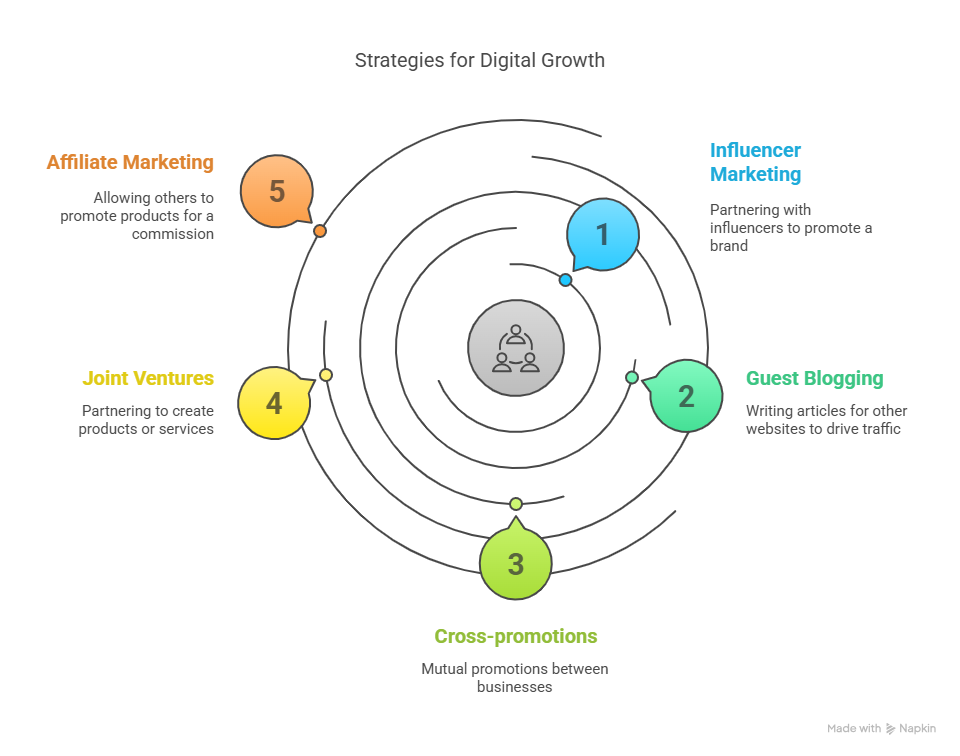
Conclusion And Future Trends
As we look ahead to 2025, it’s essential to understand the evolving landscape of web traffic generation. This section will provide a summary of key takeaways, highlight emerging trends to watch, and offer final thoughts and recommendations.
Summarizing Key Takeaways
To increase website traffic in 2025, consider the following points:
- SEO Optimization: Ensure your site is optimized for search engines. Use relevant keywords and high-quality content.
- User Experience: Focus on fast loading times, mobile-friendliness, and intuitive navigation.
- Content Marketing: Create valuable, engaging content that resonates with your audience.
- Social Media: Leverage platforms to drive traffic and engage with your audience.
- Analytics: Use data to track performance and make informed decisions.
Emerging Trends To Watch In 2025
Stay ahead by keeping an eye on these trends:
| Trend | Details |
|---|---|
| AI and Automation | AI tools, like Duda’s AI-assisted design, will enhance user experience and streamline website creation. |
| Voice Search Optimization | With the rise of smart speakers, optimizing for voice search will become crucial. |
| Video Content | Video will continue to dominate, making it essential to integrate into your content strategy. |
| Personalization | Personalized experiences will increase engagement and retention. |
| E-commerce Integration | Seamless e-commerce experiences will attract and retain customers. |
Final Thoughts And Recommendations
To thrive in 2025, adopt a proactive approach:
- Invest in AI and automation tools to enhance efficiency.
- Optimize for voice search to cater to evolving user behaviors.
- Integrate video content to boost engagement.
- Focus on personalization to deliver tailored experiences.
- Ensure seamless e-commerce integration for a smooth customer journey.
By implementing these strategies, you can stay ahead of the curve and ensure consistent growth in website traffic.

Credit: www.linkedin.com
Frequently Asked Questions
How To Increase Organic Traffic In 2025?
To increase organic traffic in 2025, focus on creating high-quality content, optimizing for voice search, improving website speed, leveraging social media, and building quality backlinks.
How Can I Get 1000 Visitors To My Website?
To get 1000 visitors, optimize for SEO, create quality content, use social media, engage with your audience, and leverage email marketing.
What Is A Good Website Traffic Growth Rate?
A good website traffic growth rate is 15-25% month-over-month. This indicates healthy and sustainable online growth.
How Long Does It Take To Increase Website Traffic?
Increasing website traffic can take 3 to 6 months with consistent SEO efforts. Results vary based on competition and strategy.
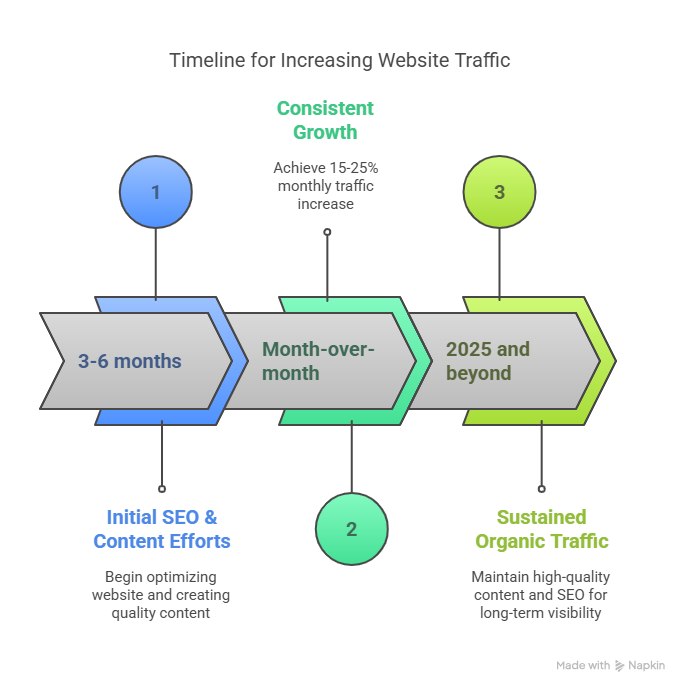
Conclusion
Driving traffic in 2025 requires strategic planning and efficient tools. Duda offers a robust platform for agencies and SaaS companies. Optimize SEO, use AI tools, and enhance client management for better results. Visit their website to explore more about their services.
Boosting traffic isn’t easy, but with the right approach and tools, it becomes manageable. Start implementing these strategies today and watch your website grow.
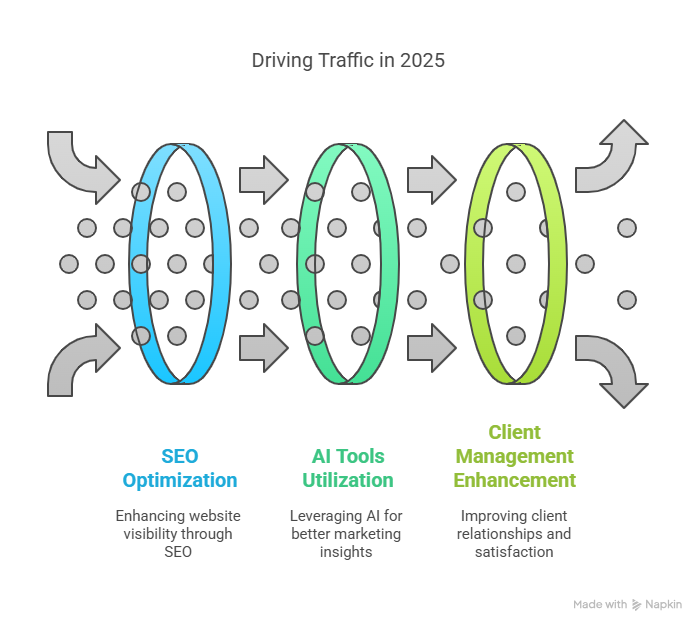
Thank you for reading my article “How to Increase Website Traffic in 2025: Simple, Proven Tips.”
